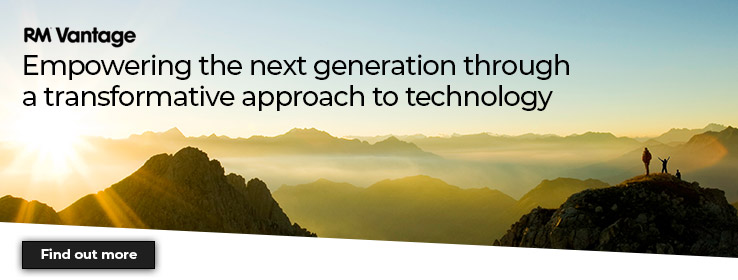
School communities are used to safeguarding in the physical world. They know who their safeguarding leads are and what to do if there’s a concern. There are clear protocols and best practices for keeping children safe in school as well as risk assessments when taking them off school grounds. There is also a clear focus on teaching children how to help keep themselves safe in their life outside of school, which now extends to the online world. But ‘online’ is a relatively new – and constantly evolving – universe, and many of us feel less confident about safeguarding in this area. When technology suddenly became the mainstay of our education system, school leaders, teachers and parents alike were confronted with a plethora of new safeguarding worries and responsibilities.
From online filtering and monitoring systems, to GDPR and privacy, to hacker prevention… alongside the considerable benefits of being able to conduct remote education online came the additional issue of keeping children safe while accessing their learning. We’ve probably all heard a story or two about things that went wrong during that time – gatecrashers to an online lesson, students muting the teacher or accessing the chat function inappropriately, students being sent the wrong link (in one reported incident, sending them to an explicit parody video in error), even teachers being trolled or bullied online by parents.
In addition to these online safeguarding concerns, the recent spike in ransomware attacks on the education sector has underlined the need for robust and up-to-date cybersecurity across school technology systems to reduce the risk of highly sensitive data being compromised.
The potential for things to go awry, for children and teachers to be negatively impacted, and for schools to experience reputational damage that in the ‘real world’ they feel more confident they can avoid, can make the online world feel like a more hostile environment. But lockdown provided the motivation to push past the fear – necessity, as they say, being the mother of invention – and as such, we saw technology being used in so many innovative, interesting, useful and beneficial ways. Now, as we enjoy a return in the UK to something that resembles normality, we must resist the temptation to run back to the old ways and perceived safety, and instead build on what worked well, learn from what didn’t, and reflect on how we can further strengthen our digital policies, protocols and tech support to ensure we can keep on enhancing teaching and learning with technology in a hybrid environment, while reducing risk.
RM’s new technology solution for schools, RM Vantage, has been developed to help schools take a transformative approach to technology, offering end-to-end support, from making sure they have the right infrastructure and internet connectivity, to recommending software, integrating systems, providing training for staff on how to set up and integrate technology with learning in the classroom, looking after their cyber security needs and much more. RM Vantage is a bespoke service to help fill the gaps schools may have in their internal provision – working collaboratively with in-house technical teams and subject leaders to get them where they want to be; empowered to take full advantage of technology in the education space from an administrative and pedagogical perspective.
Over the last period of lockdown most schools used a platform such as Microsoft 365 or Google Workspace as the foundation for the remote learning provision, learning along the way how to harness built-in functionality – for example chat/instant messaging, breakout rooms, and ‘reactions’ to re-create the classroom in an online space. Teachers and school leaders learnt how to use it as a repository for documents, for students to submit work and receive feedback, for home-school communication and about other apps and services that could be used to increase student participation and give us actionable real-time insights.
Yet many schools probably only had the opportunity to scratch the surface of what is possible. In research conducted by RM in January 2020, over half (51%) of the teachers surveyed cited lack of specific software training as a challenge to the effective use of technology and EdTech resources, with half (52%) also saying they didn’t have time to devote to setting it up. With RM Vantage, part of the service includes ongoing consultancy to support you every step of the way, as well as ongoing bitesize training and support to understand how technology can be utilised most efficiently, effectively and safely.
Take, for example, YouTube. In spite of having vast potential from an educational and community point of view, YouTube also presents one of the biggest risks for an educational setting. How can you lock down what your students can and can’t see? How can you ensure that they’re not moving on from your content into something inappropriate? How can you restrict the audience to your own content? How can you ensure that comments do not appear beneath your video leading to anything from a minor embarrassment to a major safeguarding breach? It's actually not too complicated to achieve all of this, with the right planning and coordination – but if you don’t have the internal capacity (be it expertise, or just time), YouTube could become a can you just keep kicking down the road to an unspecified point in the future when someone may or may not have time to look into it. (In case you’re interested, you can find out more about setting up a private YouTube channel for your school in the Optimising technology to ensure your school thrives (for Google platforms) webinar with RM product manager Michael Oakes). The problem is of course multiplied exponentially with every piece of software, hardware or cloud technology that could be beneficial for your school, if only you had the time...
Whether or not we have further periods of full lockdown requiring remote education in the future (and we fervently hope not) now is the time to build your EdTech strategy – and whether it’s moving services to the cloud, maximising your WiFi speed and coverage, setting up a one-to-one device scheme, developing a secure YouTube channel (or using Microsoft Stream), or strengthening your security and online safety, RM can help.
Find out more about RM Vantage
